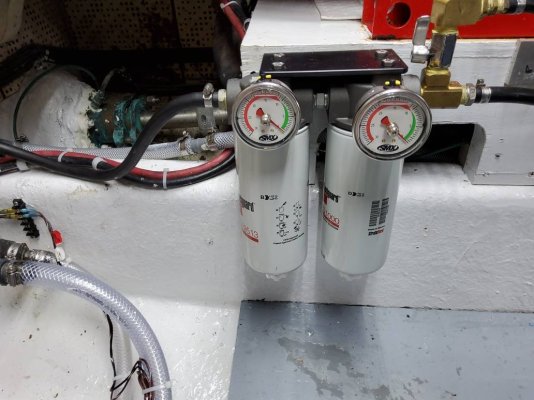Hippocampus
Guru
- Joined
- Jul 27, 2020
- Messages
- 3,917
- Location
- Plymouth
- Vessel Name
- Hippocampus
- Vessel Make
- Nordic Tug 42
Was brought up to warm up a diesel before leaving, let it cool down before shutting off (good for turbos especially ) and if not run with a fair load run it near WOT to burn off carbon periodically.
Now with newer boats all being common rail I am confused.
If run at very low load for a length of time should you still run it at or near WOT shortly before shut down ?
My crude understanding is given efficiency of fuel burn no carbonization should occur so maybe this isn’t necessary.
Been told running oil through it and slowly cooling the turbo by leaving it on idle for 5-10 minutes before shut down is a good idea. There’s no such teaching for the turbocharged common rail diesel in my Jeep. Why? What’s best practice for a marine common rail?
Been told compared to NA mechanical diesels common rail is super sensitive to bad fuel. What if any precautions do you take? ?additives? On board polishing? Additional filtering beyond OEM stock? Have you followed CaptWil’s advice? Do you periodically have the yard polish your fuel for you? Do you only store with full tanks? Have you added water traps to fuel tank vents? What do you do?
Any and all thoughts appreciated but please include the reasoning behind your advice. Thanks
Now with newer boats all being common rail I am confused.
If run at very low load for a length of time should you still run it at or near WOT shortly before shut down ?
My crude understanding is given efficiency of fuel burn no carbonization should occur so maybe this isn’t necessary.
Been told running oil through it and slowly cooling the turbo by leaving it on idle for 5-10 minutes before shut down is a good idea. There’s no such teaching for the turbocharged common rail diesel in my Jeep. Why? What’s best practice for a marine common rail?
Been told compared to NA mechanical diesels common rail is super sensitive to bad fuel. What if any precautions do you take? ?additives? On board polishing? Additional filtering beyond OEM stock? Have you followed CaptWil’s advice? Do you periodically have the yard polish your fuel for you? Do you only store with full tanks? Have you added water traps to fuel tank vents? What do you do?
Any and all thoughts appreciated but please include the reasoning behind your advice. Thanks


